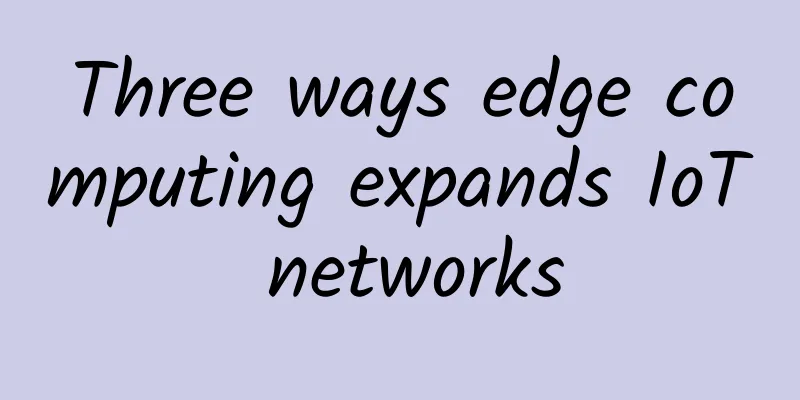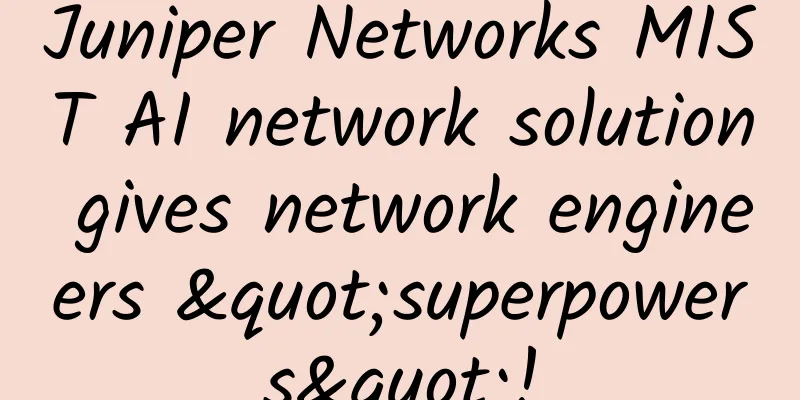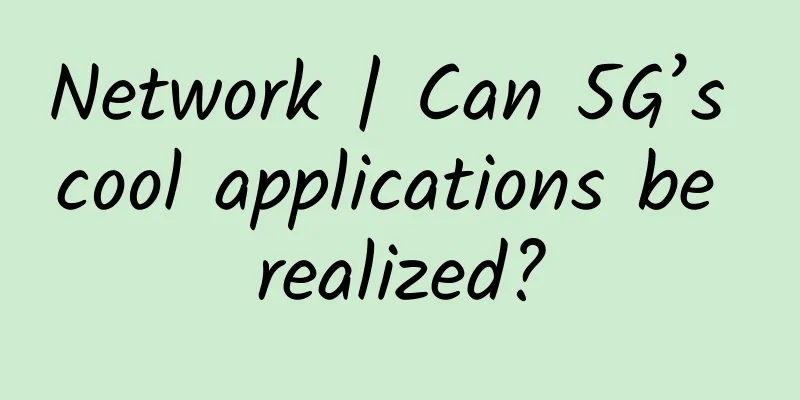Three ways edge computing expands IoT networks

|
With 6.4 billion devices connected to the internet today and 5.5 million new devices added, the rise of IoT requires new approaches to processing and analyzing needs. Taking full advantage of IoT requires robust, seamless connectivity between devices and the cloud while eliminating computational and privacy issues. Many companies are not prepared for the risks associated with IoT technology, but edge computing uses the processing power of IoT devices to aggregate, preprocess and filter data sources and enhance the functionality of digital tools. Combining edge applications with cloud connections to perform complex analysis and facilitate decision-making and action will promote faster connection speeds and related support. Although companies are just beginning to make efforts in the field of edge computing, they have already seen IoT networks have been enhanced in the following three aspects.
1. Reduce latency and process data quickly The power of cloud computing combined with IoT technology means that IoT sensors and devices will surpass mobile phones as the largest access device by 2018. Complex algorithms for industrial and consumer applications will enable voice and face recognition and machine learning capabilities to be rapidly developed and applied. However, data transmission to the cloud and back to each IoT device must cope with inevitable network delays. 45% of all IoT-created data will be stored, processed, analyzed, and performed close to or on edge networks. Edge computing solves the IoT dilemma by adjusting the processing needs of each application. Taking advantage of low latency requirements, edge networks enable IoT devices to run machine learning algorithms themselves. Only by interacting with the cloud for the required process can the dual advantages of fast data processing and reduced latency be achieved. The connection between IoT hardware and support is also reflected in the relationship between data and analysis in edge computing. 2. Powerful connectivity The speed and reduced latency of using edge computing bring huge benefits to users in terms of network connectivity. Limiting the interaction between clouds to basic functions can reduce the requirements for data transmission and reduce the cost of connection fees. In addition, applications that require network connectivity will not be disrupted by the loss of IoT devices. As more devices are connected, the consideration of network and cloud requirements depends on the application of edge computing. EdgeX Foundry is an open source software project that has established a common framework and surrounding reference platform specifically for edge computing. Dell alone has provided more than a dozen microservers and more than 155,000 lines of source code to drive the project. Edge X will provide an ecosystem of plug-and-play components that can be combined to create secure and scalable solutions for the Internet of Things. 3. Privacy Protection Threat Intelligence report shows seasonal attacks, OnRamp's Carolina Curby-Lucier explains how enterprises can leverage encryption, alerts and authentication to escape cybersecurity issues in IoT. However, the need for privacy protection in IoT goes far beyond traditional threats, including the use of edge computing to protect data. As IoT technology becomes the norm in industries ranging from healthcare to banking markets, data captured by IoT devices also needs privacy protection. Using edge computing, data from cameras or microphones can be processed using device components instead of relying on the cloud. Alternatively, when cloud support is required, the edge can pre-process the steps of the required algorithm on the device or sensor and transmit only after the data has been altered to protect privacy and speed up processing. Find the edge of the network Edge computing is not limited to processing and data storage functions residing on a single IoT device or sensor. Three different types of edge locations enable simultaneous processing with the cloud: edge gateways, edge devices, and edge sensors and actuators. Edge sensors or actuators operate without their own power supply, nor do they have their own operating system, and can use devices or gateways as connection intermediaries between IoT technology and the cloud. Devices running iOS, Linux, Android, or other operating systems may be considered edge devices. These devices typically have power/batteries and run edge computing tasks on-site, processing data and running calculations on their own or with the help of an edge gateway. Like edge devices, edge gateways have their own operating systems. Edge gateways have more powerful processing, storage, and memory capabilities than edge devices, and can also collect data and execute algorithms before sending information to the cloud. The architecture that utilizes these devices and edge computing will help create new ways of networking. New network architecture Companies like HPE, a leader in the edge space, have begun offering services like Edgeline IoT Systems to bring the benefits of IoT data to the edge. With HPE deployments, machine learning at the edge is making fraud prevention, automated maintenance support, and augmented reality (AR) possible. Bringing edge computing to the sensor or device, the cloud will create a new process architecture to solve complex problems beyond the Internet of Things. This new three-layer architecture will become the standard, centered around cutting-edge technologies based on the cloud, machine learning, and fast data. The premise of edge computing is to distinguish between immediate needs and prevent long-term analysis, allowing technology to maximize the use of storage, computing, switching, and networking. |
<<: 10 best practices to make your first IoT project a success
>>: What you need to do to prevent data center downtime
Recommend
Let's talk about DNS formal verification technology
background The Domain Name System (DNS) is a dist...
How to Start Building an SD-WAN RFP
Enterprise network teams need to draft software-d...
My HTTP/1.1 is so slow! What can I do?
[[383004]] This article is reprinted from the WeC...
"Weibu Online" was successfully selected into the list of the third batch of specialized and innovative "little giant" enterprises announced by the Ministry of Industry and Information Technology
On July 19, in the third batch of specialized, so...
Do you know the origin and function of Wi-Fi?
Since its introduction 25 years ago, Wi-Fi has pl...
DesiVPS: $15/year-1GB/15G NVMe/1.5TB@10Gbps/San Jose data center
DesiVPS continues the Black Friday promotion in D...
Use wireshark to analyze tcpdump network data packets to quickly troubleshoot and solve the frequent abnormal TCP connection disconnection problem of OceanBase in a certain environment
1. Problem phenomenon A customer reported that in...
What is fog computing and how does it relate to the Internet of Things?
Fog computing is a distributed collaborative arch...
Kuroit Japan VPS pre-sale from £3/month, Ryzen 9 3900X, 1GB memory, 15G NVMe, 1Gbps bandwidth
Kuroit recently announced the launch of Japan VPS...
CloudCone launches CDN service starting at $11.99/year, with up to 36 nodes worldwide
Recently, CloudCone has released information abou...
Interview: ZooKeeper 23 questions, see if you can answer them
1. What is ZooKeeper? ZooKeeper is a distributed,...
Spectrum is scarce and expensive. Should 2G be retained or abandoned? This is a big question that operators need to consider.
According to foreign media reports, in just a few...
Practice | Wireless AC+AP deployment solution
Characteristics and application environment of wi...
Wi-Fi chip supply shortage will not be significantly alleviated, and the release of 28nm new production capacity may become the key
According to Electronic Times, industry sources r...
Why can't the 5G package be changed back to 4G?
Recently, the "5G-forced" incident has ...









